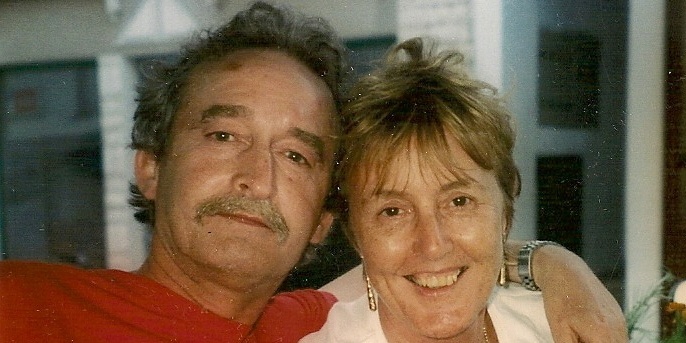A Dundee lymphoma survivor has told fellow sufferers that no matter how low they feel, there is always hope.
Mary Shields knows better than most what it is like to have the fifth most common form of cancer with more than 13,500 new cases diagnosed in the UK ever year.
Ten years ago she was one of them, and the illness took her to such depths she wondered if there was light at the end of the tunnel.
Now the inspirational 64-year-old great-grandmother is preparing for what is set to be her final appointment and discharge after nearly a decade of remission.
Mary is using her own experience to the benefit of others by becoming organiser of the Tayside Lymphoma Association support group for people who have been affected by lymphatic cancer.
She commended the group to those who are in despair or just want to talk about their illness, and stressed that no matter how low they feel, they should not suffer in silence.
”Don’t keep it all to yourself you need to talk to someone,” she said. ”That is what helped me, and I have come through it and am facing my discharge from hospital after 10 years.
”There is always hope, although at times it is difficult to grasp. It was particularly important for me, especially when I was at a low ebb, to seek advice from the professionals or who know about the illness the doctors and nurses at the hospital and talk with people in the support group and also staff at the Lymphoma Association to get as much advice and information that is available.”
Mary, who lives in the west end of the city and was manager of a residential home for the elderly, became ill in 2001. She picked up what she thought was a chest infection and went to her GP, but it remained after three courses of antibiotics and her doctor referred her to Ninewells Hospital.
She was given a chest X-Ray and then sent to Edinburgh for a biopsy in the lung area before being diagnosed with the potentially fatal Non-Hodgkin’s Lymphoma. The cancer had attacked her T-cells which meant her immune system was very low.
She was soon admitted to Ninewells for a course of six chemotherapy treatments. Initially she regarded these positively, but she soon discovered her confidence was premature.
”I had it all worked out,” she said. ”I was to go in to hospital for five days at a time for chemotherapy every three weeks and the whole regime was to last five months.
Continued…
”I couldn’t wait to get it over with so I could start my recovery and get back to work and on with my life, but that didn’t happen. My immune system was low, I kept picking up infections. Every bug that was going around seemed to come my way.
”I had no resistance and was often in hospital with an infection before my chemotherapy was due, and I had to wait until I was clear before I could have the chemotherapy.
”Some of the symptoms of chemotherapy are very challenging; things like fatigue, hair loss and poor appetite because everything you eat and drink seems to have a metallic taste.
”Another problem was that after the first three chemotherapies a scan confirmed the treatment was not working, so the doctors had to start me on a different drug regime. I was back to square one.
“The new regime seemed to work but, to give me a better chance to recover fully, it was decided that the best thing for me would be a stem cell transplant.
“The first harvest of the stem cells didn’t work and I had to go through a second before they could carry out the transplant. Thankfully this worked, I was in hospital for five weeks and after discharge, I started to pick up. It was a very long process, and what I had first hoped would take five months ended up lasting a year.”
Mary was able to confide in the medical staff in Ward 34.
”You could talk to them, they were marvelous. They understood what you were going through and you could say things to the doctors and nurses that you didn’t want to say to your family and friends.”
Mary also drew great comfort from the services of the Lymphoma Association who were a free phone call away, and the staff at the Maggie’s Centre being on hand with information, advice, support and friendship through her crisis.
A woman of great spirit, Mary is proof that life does not end with cancer. While physically unable to return to full-time work, she took on voluntary work for three years with the Samaritans and at the Botanic Gardens.
She then completed a BA (Honours) open degree through the Open University. She has also started to learn Spanish and is working towards a BA (Honours) in Modern Language Studies.
